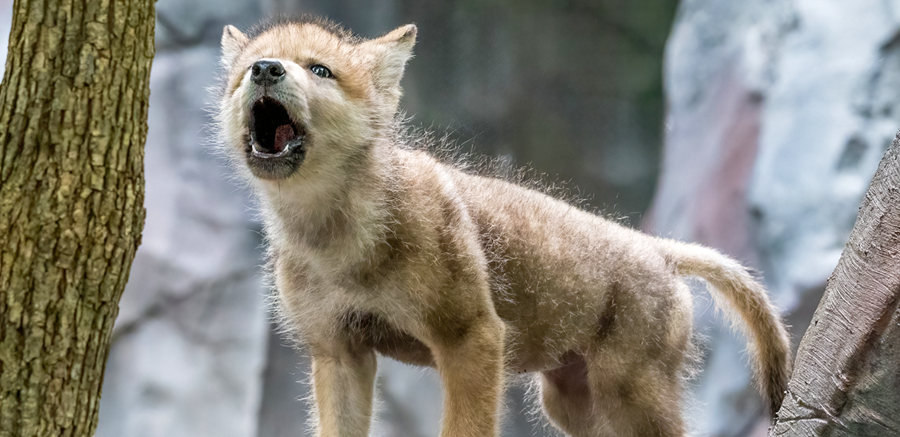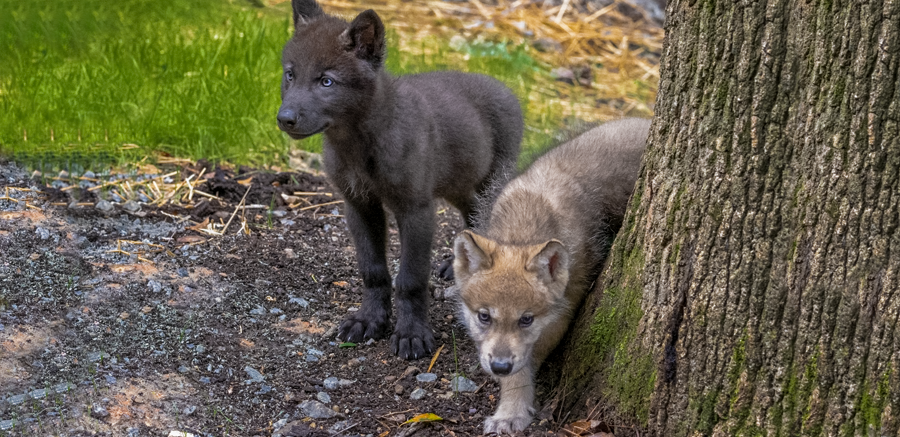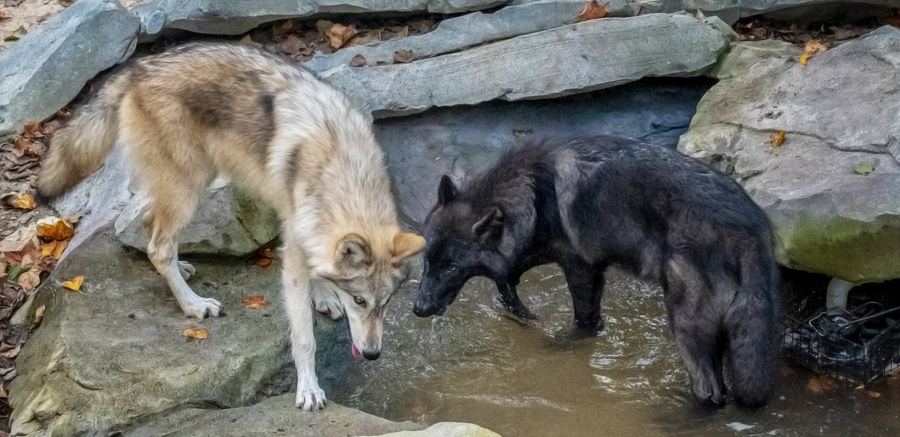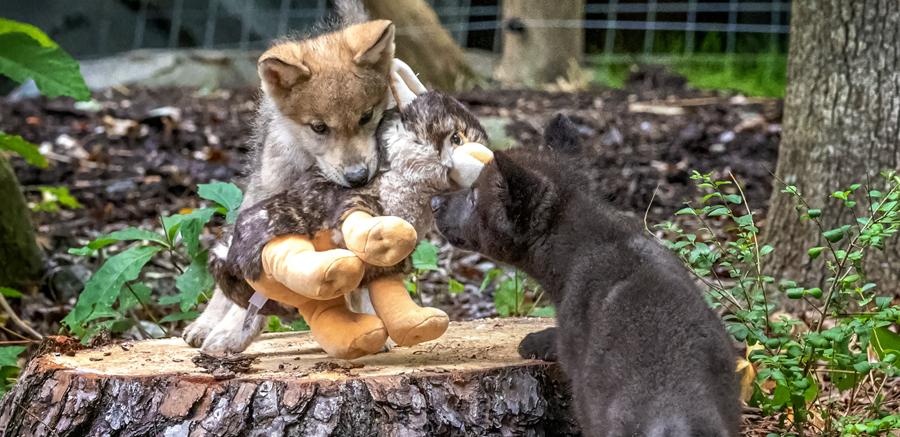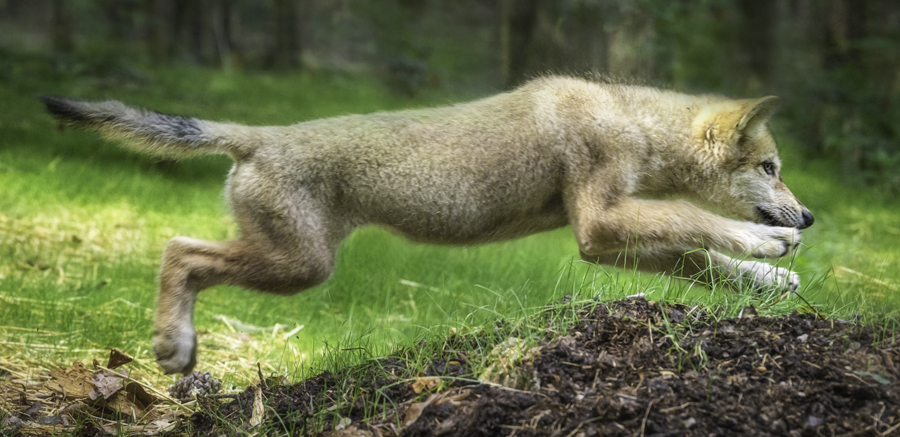
GRAY WOLF
Wolves are the wild ancestor of all our domesticated dogs, from Chihuahuas to Great Danes.
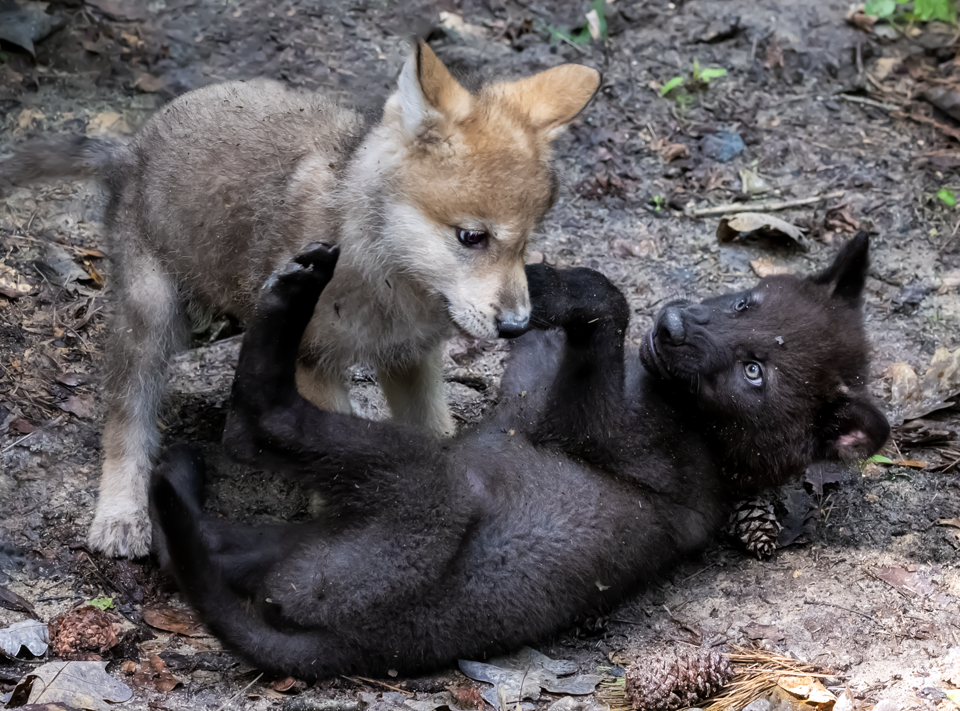
PROFILE
Our wolves came to us from a facility in Minnesota. Beo and Aurora are technically Alaskan Tundra wolves, which is a subspecies of gray wolves. Beo is the black male wolf. He was born on April 25th, 2023. Aurora is the lighter-colored female and was born on April 29th, 2023. They arrived at Yellow River Wildlife Sanctuary when they were about six weeks old and introduced to their exhibit full-time in August of 2023, when they were about four months old.
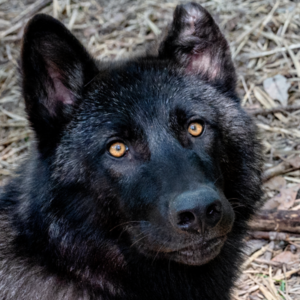
BEO
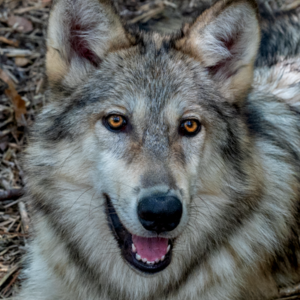
AURORA
OVERVIEW
CONSERVATION STATUS
Endangered
AVERAGE SIZE
Compared to a 6′ Man
AVERAGE WEIGHT
Females: 60-80 lbs
Males: 70-145 lbs
AVERAGE LIFESPAN
13 Years
DIET
Carnivore
REGIONS
North America
LOCATION
Gray wolves used to be found throughout the Arctic, through southern Mexico, northern Africa, and southern Asia, but due to habitat destruction and various other factors, they are found in a few areas of the contiguous US, Alaska, Canada, Mexico, and Eurasia. They are one of the most wide ranging land animals living in a variety of habitats from the tundra, prairie, and even arid landscapes.
APPEARANCE
These canids are renowned for their distinctive grayish fur, which can vary in shades from light gray to dark brown. Typically, they feature a prominent blend of fur colors, creating a camouflaging effect in their natural habitats. Averaging around 2.5 to 6.5 feet in length, excluding the tail, and weighing between 40 to 175 pounds. The height at the withers, which is the highest point on the back, typically ranges from 26 to 32 inches. Gray wolves are robust and well-adapted predators. Adult gray wolves have a distinct facial appearance with a straight profile, a broad forehead, and a strong jaw. The eyes of a gray wolf are often amber or yellow, imparting an intense and alert expression. The forelimbs of the gray wolf are powerful and equipped with sharp claws, aiding in activities such as digging and capturing prey. These wolves are built for endurance and speed, capable of covering large distances in search of food. Overall, the physical characteristics of the gray wolf contribute to its adaptability and success as a predator in various ecosystems around the world. Fun Fact: All wolf pups are born blind and deaf.
CHARACTERISTICS
Gray wolves, also known as Alaskan Tundra Wolves, are highly social and intelligent mammals that exhibit a range of fascinating characteristics. One of their most remarkable traits is their adaptability, allowing them to thrive in diverse ecosystems such as forests, tundras, and grasslands.
In addition to their physical features, gray wolves have evolved remarkable sensory adaptations that further enhance their hunting and survival abilities. Their acute sense of hearing allows them to detect the slightest sounds, making them adept at locating prey and communicating within the pack over long distances. The highly developed sense of smell in gray wolves is crucial for tracking prey, identifying pack members, and marking territories. Their olfactory capabilities are so advanced that they can detect scents from miles away, contributing to their success as skilled predators.
Gray wolves are pack animals, known for their complex social structures. These packs are led by an alpha pair, typically the dominant male and female, and may include their offspring and other subordinate wolves. This pair is monogamous until one of them dies. Cooperation within the pack is crucial for hunting, raising pups, and defending territory. Wolves communicate through vocalizations, body language, and scent marking, fostering a strong sense of community within the pack. Their keen senses, including acute hearing and a highly developed sense of smell, contribute to their prowess as efficient hunters. Despite being formidable predators, gray wolves play a vital role in maintaining ecological balance by controlling herbivore populations and influencing the health of the ecosystems in which they reside.
All images © 2023 Jenn Cardinell Photography



